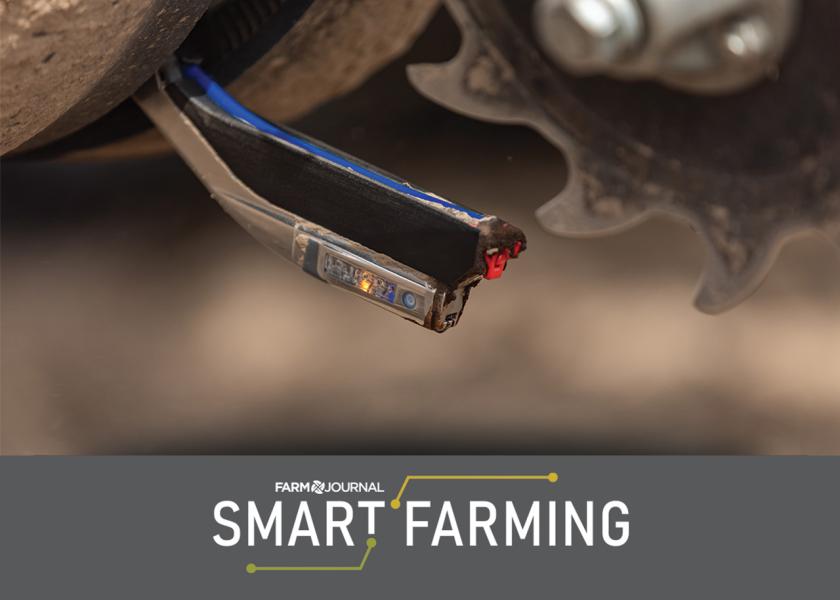Smart Firmer: What Is It, What Can I Do With The Data?

Kentucky farmer Eugene Keeton invented the seed firmer during the 1990s, coming up with the practical innovation with some steel wire and duct tape the WWII vet had in his pickup truck.
The concept is simple yet novel: a thin piece of material attached to the planter closing wheel mount, positioned in the center of the seed trench, responsible for corralling seeds and nestling them seed-to-soil, right into a cozy furrow.
After perfecting his design and selling it locally to his neighbors, Keeton eventually struck a deal with Tremont, Illinois, farmer and serial entrepreneur Gregg Sauder to manufacture and distribute seed firmers throughout North America. Today, Sauder’s former passion project – Precision Planting – still sells a composite seed firmer based around Keeton’s original design, with a few modern twists, of course.
A 2019 farm trial on the Seed Firmer conducted by Precision Planting showed a 3 bushel per acre advantage over planting without a firmer.
Precision Planting took the Keeton Seed Firmer a step further, developing a novel sensing technology – Smart Firmer – that places soil sensing technology (Near Infrared spectrum) deep into the furrow. The firmer's optics can sense soil moisture and temperature, organic matter, and planting depth, transmitting those data points in real time to the in-cab monitor. Variable rate seeding by soil organic matter is possible when paired with VRT seeding technologies, according to Precision Planting.
Smart Firmer can also be set up with FurrowJet for in-furrow at-plant liquid pop-up applications. And it can transmit real time downforce readings (and adjust on the fly) if linked with Precision Planting’s Smart Depth product.
It represents a fresh spin on an existing technology that bolts on advanced sensors and deploys them in an innovative, useful manner.
How To Use Smart Firmer Data
The data is used by farmers in two-fold: during planting, the data displayed on the tractor monitor (Smart Firmer requires a Gen 3 or Gen 3 20/20 Seed Sense monitor) serves as a visual confirmation of planting into good soil conditions (moisture, temperature) for strong germination.
Soil organic material is also displayed, letting the farmer know if there is too much or too little residue in the furrow.
Since different areas of fields have varying soil types and organic matter, elevation, and drainage rates, it’s helpful to see those real-time metrics as the planter works ground in case it encounters spots that are too dry or too cold for fast, strong seed germination. Oftentimes, the farmer will manipulate planting depths based off these readings.
“By having that adequate soil moisture (confirmation) we can tell if we’re planting too shallow, too deep or if we’re planting in the right location,” Ohio farmer Austin Heil says in a recent Facebook video breaking down his planter tech setup. “It also gives us the opportunity to see what the soil temperature is, and what’s the clean furrow look like? Do we have a lot of trash in there? And then the other thing it gives us is our organic and CEC.”
Once harvest is complete and all the data collected, cleaned and sorted, Smart Firmer data can be considered alongside yield by zone data, elevation, fertility, soil organic matter and aerial imagery data, as well as rainfall/weather data, to gain valuable insights into how to adjust planting for better success next season.







